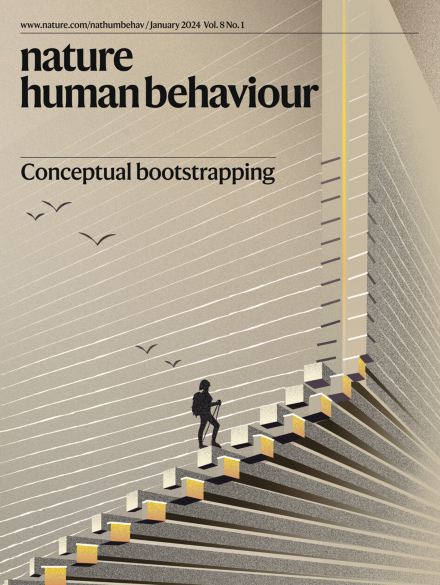Children spontaneously discover efficient solutions to a difficult sorting task.
IF 15.9
1区 心理学
Q1 MULTIDISCIPLINARY SCIENCES
引用次数: 0
Abstract
Efficient algorithms can enhance problem-solving in many cognitive domains but can be difficult to discover and use. For example, classical studies of seriation suggest that children struggle to apply algorithmic strategies in a simple sorting problem. We investigated the spontaneous discovery of algorithmic solutions across development. We gave children a variant of the sorting problem with hidden object ranks: children sort animated bunnies into the right order, from the shortest to the tallest, when the bunnies are standing behind a wall so their heights are not visible. Children performed far above chance on this difficult sorting task, potentially because higher demands in memory and reasoning incentivized strategic behaviours. Children also independently discovered at least two efficient algorithmic solutions to the sorting problem: selection sort and shaker sort. Additionally, our developmental results show that older children were more effective sorters than younger children and used efficient sorting algorithms more frequently. These results indicate that children are far more competent at applying algorithmic solutions to sorting tasks than previous research would suggest, and performance on sorting tasks improves throughout development. Our work demonstrates that children have the ability to spontaneously organize their behaviours and find effective solutions to challenges in the world.孩子们会自发地发现困难的分类任务的有效解决方案。
高效的算法可以增强许多认知领域的问题解决能力,但很难发现和使用。例如,经典的排序研究表明,儿童很难在简单的排序问题中应用算法策略。我们调查了在整个开发过程中自发发现的算法解决方案。我们给孩子们提供了隐藏物品排序问题的一个版本:孩子们将动画兔子按正确的顺序排序,从最短到最高,当兔子站在墙后面时,它们的高度是不可见的。在这项困难的分类任务中,孩子们的表现远远高于随机,可能是因为对记忆和推理的更高要求激励了策略行为。孩子们还独立地发现了至少两种有效的排序问题算法解决方案:选择排序和震动排序。此外,我们的发展结果表明,年龄较大的儿童比年幼的儿童更有效地排序,并且更频繁地使用有效的排序算法。这些结果表明,儿童在应用算法解决排序任务方面比之前的研究表明的要能干得多,并且在整个发展过程中,排序任务的表现会有所提高。我们的工作表明,孩子们有能力自发地组织自己的行为,并找到应对世界挑战的有效解决方案。
本文章由计算机程序翻译,如有差异,请以英文原文为准。
求助全文
约1分钟内获得全文
求助全文
来源期刊

Nature Human Behaviour
Psychology-Social Psychology
CiteScore
36.80
自引率
1.00%
发文量
227
期刊介绍:
Nature Human Behaviour is a journal that focuses on publishing research of outstanding significance into any aspect of human behavior.The research can cover various areas such as psychological, biological, and social bases of human behavior.It also includes the study of origins, development, and disorders related to human behavior.The primary aim of the journal is to increase the visibility of research in the field and enhance its societal reach and impact.
 求助内容:
求助内容: 应助结果提醒方式:
应助结果提醒方式:


